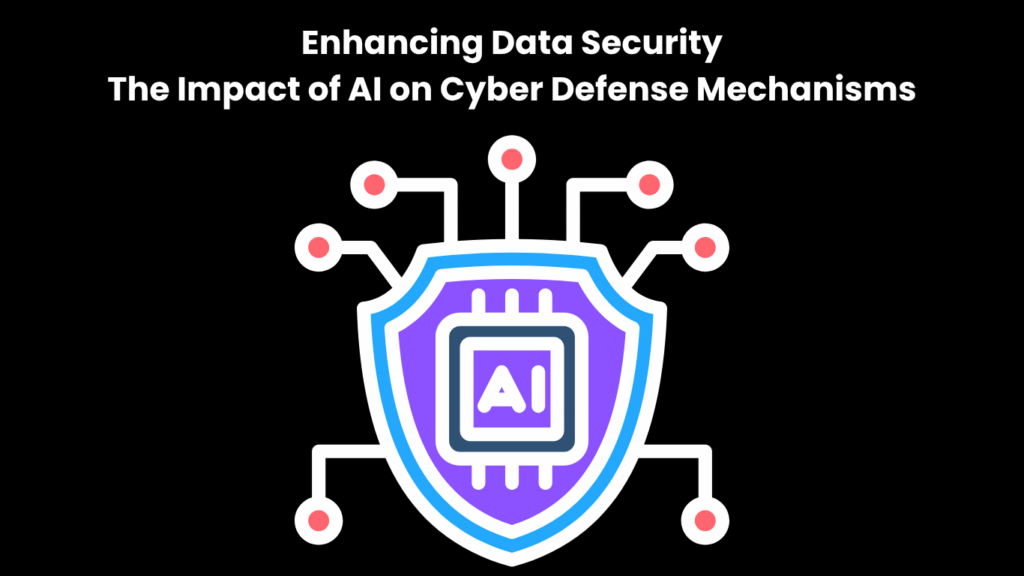Cyberattacks are growing smarter and more frequent. Businesses, especially small to medium ones, often feel unprepared to handle these threats. Hackers constantly exploit weaknesses in systems, leaving companies scrambling to protect sensitive data.
Here’s the good news: artificial intelligence (AI) is reshaping cyber defense. AI can identify patterns that humans might overlook and respond faster than traditional methods. In this blog, you’ll learn how AI helps prevent attacks, anticipate vulnerabilities, and automate responses to enhance security. Interested in how it works? Keep reading!
AI in Cyber Threat Detection
AI identifies suspicious activity more quickly than humans. It studies patterns to detect risks before they create disruption.
Identifying patterns in cyber threats
Hackers often take advantage of recurring flaws within systems. AI tools detect these flaws by analyzing extensive amounts of data. They review malware files, phishing emails, and past attack methods to identify patterns humans might overlook. For example, if a virus consistently targets certain software vulnerabilities, AI can detect this behavior early.
Malicious activity often adheres to predictable trends during specific periods or in specific industries. Cybercriminals may increase attacks during holidays or take advantage of weak points like outdated network security systems. By identifying such trends quickly, businesses can address gaps before attackers strike again.
Real-time intrusion prevention
AI tools block potential threats instantly. They analyze network traffic for unusual activity and prevent breaches before they occur. These systems operate continuously, stopping cyber threats while you sleep.
Machine learning enhances detection accuracy. By studying past attacks, AI recognizes irregular patterns faster than humans. Many organizations strengthen these defenses further by working with trusted providers offering IT helpdesk services in New York, ensuring that AI-powered monitoring is backed by responsive support teams.
Automated Response Mechanisms
AI responds to cyber threats more rapidly than any human could. It stops breaches before they cause widespread disruption across your network.
Threat mitigation through automation
Automation reduces human error in initial threat responses. Systems can identify and limit harmful activity within seconds, safeguarding important data. Automated tools recognize irregularities more quickly than manual methods. Picture a sophisticated alarm system for your network that acts instantly without requiring user input.’Quick action is critical to halting cyber threats before they escalate,’ says cybersecurity expert Mark Elder.
Artificial intelligence works alongside these systems to prevent phishing attempts or malware installations immediately. Forward-thinking providers like Prototype’s tech management help companies implement automation effectively, aligning AI-driven tools with broader IT strategies.
Incident response and recovery
Automating threat mitigation prepares the foundation for quick incident handling. AI-based systems can identify breaches, isolate affected areas, and reduce damage within seconds. This rapid response provides essential time to prevent further harm. Recovering from cyberattacks often requires accuracy and speed. AI supports digital forensics by examining compromised data effectively. Machine learning tools assist businesses in resuming operations while maintaining network security after an attack.
Predictive Analytics and Risk Management
AI predicts weaknesses before cybercriminals strike. It keeps your defense strategies one step ahead of threats.
Forecasting potential vulnerabilities
Predicting vulnerabilities helps businesses protect sensitive data before threats become breaches. AI algorithms scan extensive amounts of information to identify weak spots in network security. These tools analyze historical cyber attack patterns and system behaviors, identifying areas prone to exploitation.
This foresight enables IT teams to address issues like outdated software or misconfigurations. For example, machine learning models can detect an unpatched application at risk of ransomware attacks. Early insights result in fewer surprises and better-prepared defenses against advanced cyber threats.
Enhancing proactive defense strategies
Forecasting risks gives businesses an advantage, but preparing for attacks requires action. AI tools enhance network security by analyzing patterns and stopping breaches before they escalate. These systems act like digital bodyguards, constantly scanning for unusual activities to reduce threats. Machine learning models develop smarter predictive analytics over time. They learn from past data breaches to help IT teams prevent future ones. This forward-thinking approach means less downtime and fewer losses during incidents, which keeps operations running smoothly.
Challenges of AI in Cyber Defense
AI isn’t without imperfections in cybersecurity. Malicious individuals also use machine learning to outwit defense systems, creating an ongoing struggle.
Adversarial machine learning threats
Hackers take advantage of weaknesses in machine learning models. They modify input data to deceive systems into making incorrect decisions. For example, attackers can slightly change malware signatures, evading sophisticated threat detection tools without being noticed. Such attacks weaken the dependability of automated security measures and leave networks vulnerable.
These threats progress rapidly, surpassing defenses like traditional firewalls or static filters. Businesses depending on AI for network security must remain vigilant to this increasing danger. Regularly updating machine learning models to identify adversarial patterns is essential. Allocating resources to monitoring tools that identify irregular inputs helps minimize the vulnerabilities hackers might exploit.
Ethical considerations and bias
AI can unintentionally adopt biases from the data it analyzes. These biases may result in unfair prioritization of certain threats over others, leaving systems exposed in unexpected ways. For example, if training data lacks diversity, AI might miss lesser-known cyber threats prevalent in specific regions or industries.
Ethical concerns also emerge when AI makes critical decisions without human review. Automated systems could incorrectly flag harmless actions as malicious or fail to detect complex attacks masked within normal activities. Businesses must consistently review their AI models and ensure clarity in decision-making processes to maintain trust and fairness across cybersecurity measures.
Read More: AI-to-Human Text Tools: The SEO Content Game-Changer
Conclusion
AI reshapes the fight against cyber threats. It spots risks faster and responds with precision. Still, challenges like bias and adversarial tactics demand caution. Businesses must balance innovation with responsibility. Strong strategies today can secure safer tomorrows.




